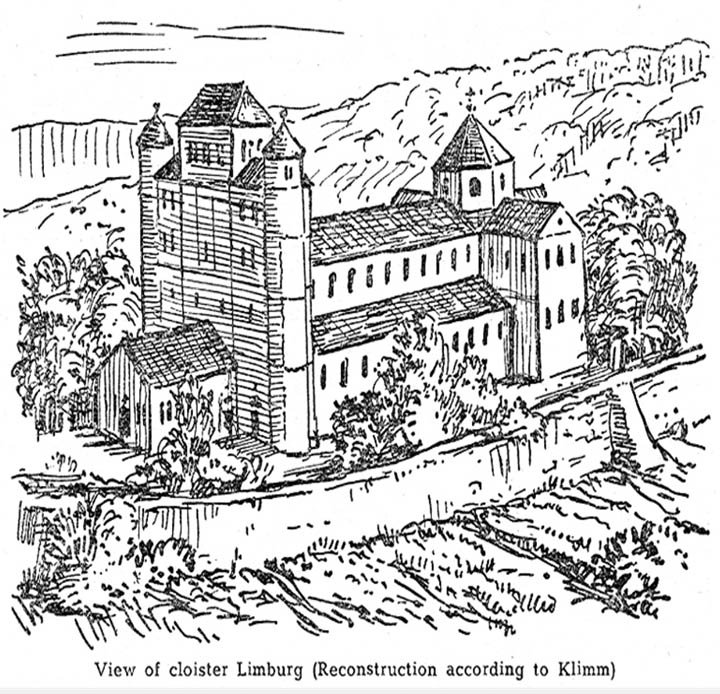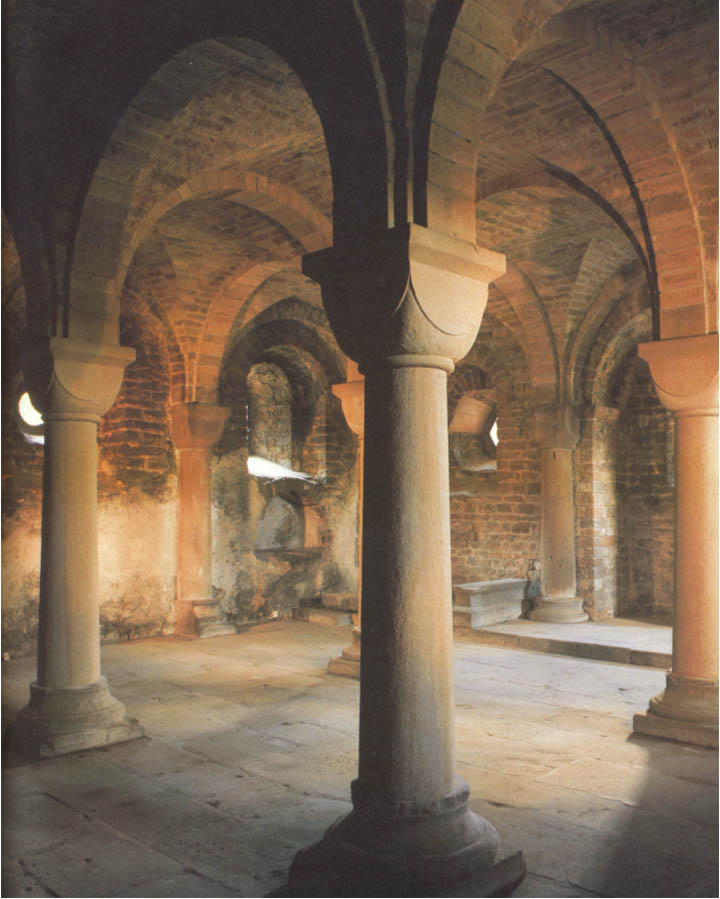The Limburg Ruin
The Limburg Ruin is of interest to the descendants of Friedrich Carl and Anna Catharina Christlieb because of its location above Grethen, a small community just a short walk from the village of Dürkheim, where the Christlieb family resided previous to their emigration to America in 1765.
Even in ruins, the Benedictine abbey Limburg is a grand sight as it towers over the Dürkheim valley. It has been associated with the Castle of the Holy Grail in the Percival epic of the poet Wolfram von Eschenbach.
Even American author James Fenimore Cooper was fascinated with the Limburg’s history. While living in Paris between 1826 and 1833, he made lengthy visits to England, Germany, Switzerland, and Italy. These visits resulted in his writing a book a year. In 1832, he published Die Heidenmauer (The Pagan Wall), a novel inspired by his visit to Dürkheim and the ruins of the Limburg Monastery.
"Set in the Palatinate during the early 16th century, the sociopolitical novel pictures a power struggle among three forces: the church, the aristocracy, and the rising commercial class. The principle exponents of these forces are, respectively, Father Bonifacius, Abbot of Limburg; Emich Leininger, Count of Leiningen-Hartenburg; Heinrich Frey, Burgermeister of the Town of Dürkheim. It is a bitter struggle which often reveals the worst sides of the adversaries, and none of the three principles emerges as a really attractive character. Beyond the passing performance of these individuals lies the more protracted drama of the Reformation.”
Warren S. Walker’s “Plots and Characters in the Fiction of James Fenimore Cooper.” (Hamden, Connecticut: Archon Books, 1978), pp. 54-61.
As early as 1000 B.C. ancient settlers fortified the heights of the “Lintberg” mountain with a mound and remained there for centuries. Limburg, named Lintberg in old records, signifies “Dragon-mountain, dragon being the equivalent of the old Germanic word, Lintwurm.
As far back as 500 B.C., a Celtic princely seat is known to have existed atop the Lintberg. In times of danger people sought protection behind the high walls of a “Fluchtburg” or “Heidenmauer” (a fortified place of refuge) on top of the Kastanienberg, situated directly opposite the Lintberg.
Conrad II, a Salian and descendant of the Emperor Otto I, was elected King of Germany, in 1024, and crowned Emperor of the Holy Roman Empire in 1027. Both he and his wife, Gisela, descendants of Charlemagne, turned the ancestral castle into a cloister. Completed in 1042, the church was consecrated in honor of the Holy Cross and the Virgin Mary.
In 1206, the Emperor named the Counts of Leiningen as protectors of the Abbey, who, in time, misused their powers. This caused continual quarrels and strife between the Abbots and the Counts of Leiningen. The power struggle, which had gone on for generations, reached an end when the peasants and mercenaries of Dürkheim and Leiningen plundered the monastery and set it on fire, in 1504.
In the end, all nineteen buildings and the beautiful cloister church with its 21 altars, including valuable statues and paintings were destroyed. Only one single tower remained.
In Die Heidenmauer, American author James Fenimore Cooper described the cloister church:
“The building was vast with numerous marble altars, dedicated to various saints. The wall and the nave were painted al fresco with cherubs around the organ, the altar and the ornate tombs. The Abbey rooms were wainscoted in dark oak with chairs upholstered in velvet. Light for the upper church entered through high narrow windows of painted glass. The black marble tombs of the royal family were in a crypt, a semi-subterranean chapel beneath the choir.”
Not all of the cloister’s valuables were destroyed; the beautiful Limburg Madonna, shown at the right dates from ca. 1300 and is on display in the Church of St. Mary in Cologne.
The destruction of the Limburg in 1504 was followed by the Reformation (1563) that put an end to monastic life. Unfortunately, the monastery and its many adjacent buildings served as quarries during the French occupation in the late 1700s and for a long time after, resulting in further destruction.
In 1843, Dürkheim town purchased the Limburg and the entire area surrounding it. The protection of the valuable ruin is now in the hands of city of Bad Dürkheim.

Jacob and Carl Christlieb, whose childhood years were spent within the shadow of the Limburg, would have found the ruin irresistible to explore, a place where their imaginations could take them back to the age of knights and chivalry. The Limburg Ruin, the old Castle Church at Dürkheim, and other memories of Germany no doubt remained with them for the rest of their lives.

The restored crypt of the Limburg Cloister. After the destruction of the Abbey in 1504, the contents of the crypt were removed to the Schlosskirche, where a chapel was built to house the sacred remains.
Sources:
Feldmann, Georg et al. Bad Dürkheim Chronic einer Salierstadt: Pfälische Verlangsanstalt, Landau, Deutschland, 1978.
Karl Heintz and Martmut Frien. Im Banne der Limburg: Garamond Verlag, Peter J. Russek, Grünstadt (Pflaz), 1984.
Klim, Franz. Limburg, Cloister Seebach and Hardenburg: Verlag Jaeger – Speyer am Rhein, 1954.
Reul, Myrtle R. "James Fenimore Cooper’s Visit to Dürkheim": Jacob’s Ladder, Vol. XV, No. 2, Winter 1998.





